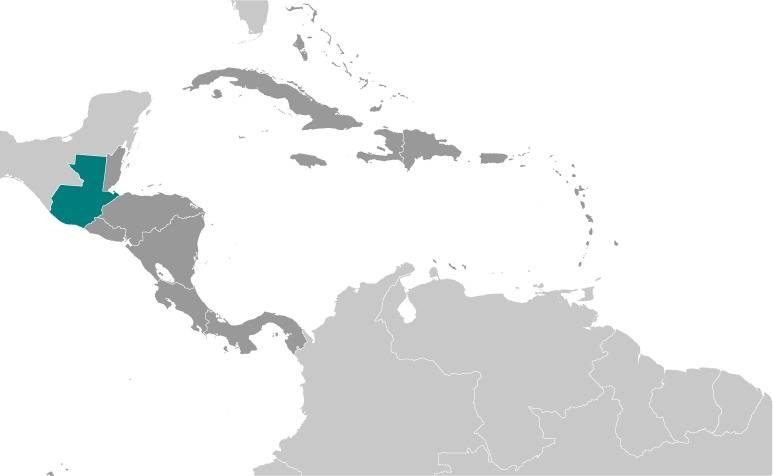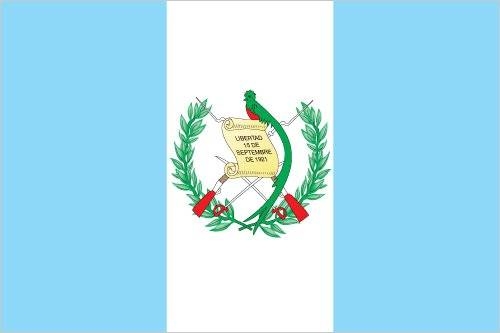Country Summary




Introduction
Background
The Maya civilization flourished in Guatemala and surrounding regions during the first millennium A.D. After almost three centuries as a Spanish colony, Guatemala won its independence in 1821. Despite having both eastern and western coastlines (Caribbean Sea and Pacific Ocean respectively), there are no natural harbors on the west coast.
Geography
Area
total: 108,889 sq km
land: 107,159 sq km
water: 1,730 sq km
Climate
tropical; hot, humid in lowlands; cooler in highlands
Natural resources
petroleum, nickel, rare woods, fish, chicle, hydropower
People and Society
Population
17,703,190 (2022 est.)
Ethnic groups
Mestizo (mixed Amerindian-Spanish - in local Spanish called Ladino) 56%, Maya 41.7%, Xinca (Indigenous, non-Maya) 1.8%, African descent 0.2%, Garifuna (mixed West and Central African, Island Carib, and Arawak) 0.1%, foreign 0.2% (2018 est.)
Languages
Spanish (official) 69.9%, Maya languages 29.7% (Q'eqchi' 8.3%, K'iche 7.8%, Mam 4.4%, Kaqchikel 3%, Q'anjob'al 1.2%, Poqomchi' 1%, other 4%), other 0.4% (includes Xinca and Garifuna); note - the 2003 Law of National Languages officially recognized 23 indigenous languages, including 21 Maya languages, Xinca, and Garifuna (2018 est.)
Religions
Roman Catholic 41.7%, Evangelical 38.8%, other 2.7%, atheist 0.1%, none 13.8%, unspecified 2.9% (2018 est.)
Population growth rate
1.58% (2022 est.)
Government
Government type
presidential republic
Capital
name: Guatemala City
Executive branch
chief of state: President Alejandro GIAMMATTEI (since 14 January 2020); Vice President Cesar Guillermo CASTILLO Reyes (since 14 January 2020); note - the president is both chief of state and head of government
head of government: President Alejandro GIAMMATTEI (since 14 January 2020); Vice President Cesar Guillermo CASTILLO Reyes (since 14 January 2020)
Legislative branch
description: unicameral Congress of the Republic or Congreso de la Republica (160 seats; 128 members directly elected in multi-seat constituencies in the country's 22 departments and 32 directly elected in a single nationwide constituency by closed party-list proportional representation vote, using the D'Hondt method; members serve 4-year terms)
Economy
Economic overview
growing Central American economy; unique South Korean business relations; high poverty, inequality, and malnutrition; low government revenues impede educational, sanitation, and healthcare efforts; high migration, child labor, and remittances
Real GDP (purchasing power parity)
$141.5 billion (2020 est.)
Real GDP per capita
$8,400 (2020 est.)
Agricultural products
sugar cane, bananas, oil palm fruit, maize, melons, potatoes, milk, plantains, pineapples, rubber
Industries
sugar, textiles and clothing, furniture, chemicals, petroleum, metals, rubber, tourism
Exports
$13.12 billion (2020 est.)
Exports - partners
United States 33%, El Salvador 12%, Honduras 8%, Mexico 5%, Nicaragua 5% (2019)
Exports - commodities
bananas, raw sugar, coffee, cardamom, palm oil (2019)
Imports
$19.3 billion (2020 est.)
Imports - partners
United States 36%, China 12%, Mexico 11%, El Salvador 5% (2019)
Imports - commodities
refined petroleum, broadcasting equipment, packaged medicines, cars, delivery trucks (2019)
Exchange rates
quetzales (GTQ) per US dollar -
Page last updated: Thursday, May 12, 2022
